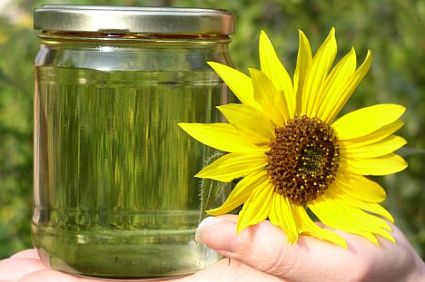
No doubt, biofuel is good, however, the only problem that’s hampering its production is – the wastes are many and there are no proper ways of disposal. The main byproduct of biofuel production is glycerol or glycerin. Though glycerol finds some uses in foods, soaps and dynamite, the recent rise in the production of biofuel has made the market saturated.
If scientists are able to find some more profitable uses for glycerol, then manufacturers will be lured to develop biofuel because they will even be able to sell its byproducts. Glycerol is not the only byproduct of biofuel production that needs some experimentation – scientists are going greedy and are even trying to find out some profitable uses for the leftovers from the production of corn ethanol and cellulosic ethanol. These leftovers include distillers’ dry grain from corn ethanol and lignin from cellulosic ethanol.
While some researchers are trying to figure out ways to use the byproducts, others are busy thinking about a new biofuel manufacturing technique that alters the leftovers to products that have some market value. Some ethanol processing plants are burning lignin to generate steam and heat to run the main process of ethanol production. As a fuel lignin is not that efficient and costly, a ton of lignin would be worth a mere $40. PureVision has now developed a way to make a different form of lignin that would make it an attractive product for a variety of industrial products like glues, sealants and detergents. PureVision hopes that this new form of lignin would sell somewhere around $300 a ton or even more than that. The company is now in talks with wood and paper product manufacturers who are interested in using lignin as biobased glue for its laminates, plywood and other products.
Another researcher named Victor Lin has altered the production process of biodiesel to one that yields a higher quality form of glycerol, which could be converted to useful industrial materials. For this, he also created a catalyst that is safer and easier to use than the one commonly used today. This way he not only altered the chemical makeup of the resultant glycerol but also reduced the production cost of biodiesel. Now these researchers are figuring out ways to convert the resulting glycerol into a substance called 1,3 propanediol or PDO that is the base material for a substance used in upholstery and carpets.
Each gallon of biodiesel accounts for a pound of glycerol and a lot of manufactures want better uses of the byproduct so that their businesses become more profitable. This glycerol is currently selling for 20 to 50 cents a pound, but when better uses are delivered to these manufacturers, they can sell the same product at a profitable 80 cents a pound.
Distillers’ Dry Grain is also on the list of researchers who want to use the product again to produce biodiesel. They state that the grain is more than 10% oil and one ton of it can yield close to 30 gallons of biodiesel. Such products and uses of biodiesel can surely help researchers meet their dream of a multi-product biorefinery – that is more profitable and eco-friendly than ever.
Via: CNet




